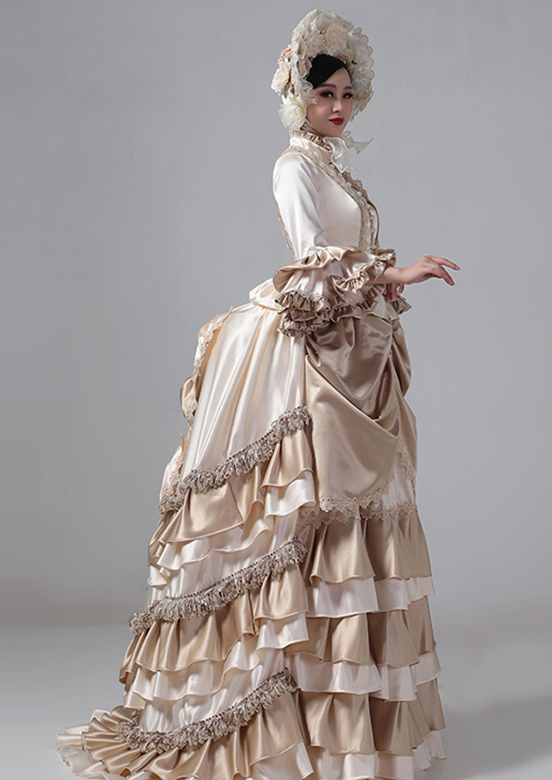Masquerade balls, with their blend of mystery, elegance, and theatrics, have been a favored social event for centuries. Originating in the Renaissance period and gaining immense popularity in 18th-century Europe, these balls offered attendees a chance to escape reality, assume a different identity, and indulge in the world of make-believe. Naturally, attire played a central role in this transformation, and as fashion evolved, so did the costumes worn to these extravagant events.
The Reign of the Bustle: A Fashion Statement
As the Victorian era unfolded, fashion witnessed significant shifts. One particularly iconic style that emerged was the bustle dresses. These dresses, characterized by the framework-supported structure protruding at the back of the skirt, became synonymous with Victorian fashion. At masquerade balls, the bustle added a layer of sophistication, drama, and flair. Adorned with laces, ribbons, and ruffles, these dresses became the embodiment of elegance and were a favorite among the attendees.
Masked Mysteries
Central to the masquerade ball was, of course, the mask. These were not just simple face coverings; they were elaborate works of art. Crafted from materials like velvet, silk, and lace and often adorned with jewels, feathers, and beads, masks gave attendees the freedom to assume a new identity, if only for a night.

Accents of Elegance: Accessories of the Time
To complement their attire, guests didn't shy away from accessories. Fans, gloves, and intricate jewelry added to the allure. Men would often don jeweled cufflinks, pocket watches, and ornate walking canes. These accessories not only accentuated the outfits but also showcased the wearer's status and refinement.
Dapper Gentlemen
While women flaunted bustle dresses, the men weren't far behind in the fashion race. Tailcoats, waistcoats, and cravats were the order of the day. Dark suits, often in velvets and silks, with high collared shirts and polished shoes, made men look every bit as regal as their female counterparts.
Dance the Night Away
Footwear was as crucial as the attire. Ladies opted for heeled shoes, often decorated with bows or lace. Men, on the other hand, sported polished boots or shoes, ensuring they could glide effortlessly on the dance floor.
Masquerade balls were not just about music, dance, and mystery; they were a showcase of the era's fashion sensibilities. The Victorian era, with its bustle dresses and attention to detail, left an indelible mark on the world of masquerades. Today, as we look back, these balls serve as a window into a bygone era, reminding us of the time when fashion and fantasy seamlessly intertwined.
